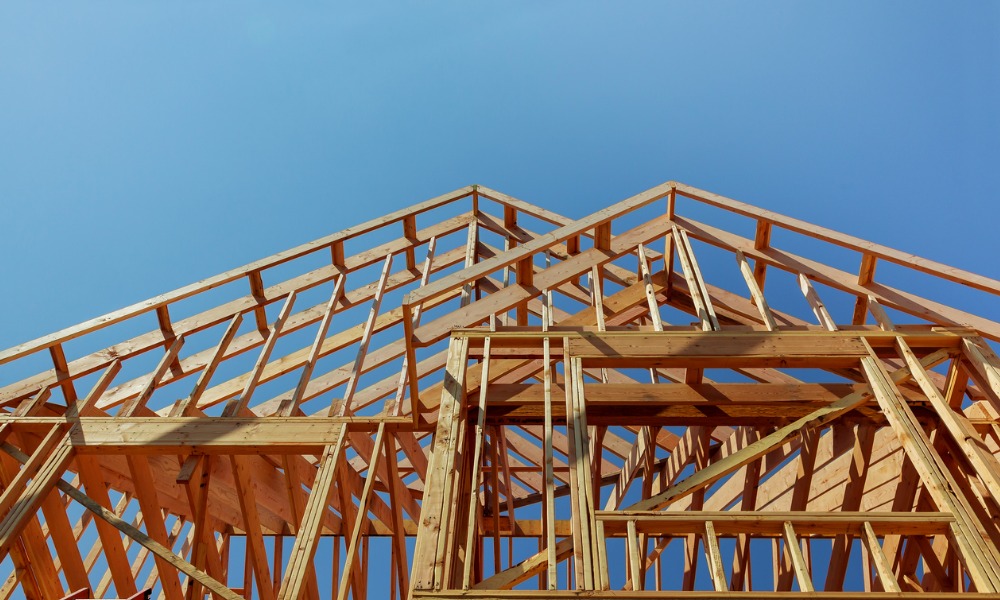NAHB report reveals strong homebuilding activity in areas with fewer second homes

Single-family home construction is on the rise across the US, while multifamily production continues to decline, according to the latest findings from the National Association of Home Builders (NAHB).
Demand for single-family homes has remained steady, even in the face of high mortgage rates, as limited resale inventory and pent-up demand drive growth in new construction.
“Despite the elevated interest rate environment, single-family construction continues to move along at a better pace than 2023 and has been led by a rebound in construction activity in high-density areas,” said NAHB chairman Carl Harris.
Meanwhile, multifamily housing construction is slowing. Builders in this sector are dealing with multiple challenges, including tight financing and high levels of inventory, which have led to a decrease in new permits for multifamily units.
“Multifamily construction continues to slow as builders deal with higher rates, a shortage of workers and supply chain concerns for some building materials,” Harris added.
Single-family demand
The growing demand for single-family homes is reflected in rising construction activity across all regions.
NAHB’s Home Building Geography Index (HBGI) showed that large metro core counties saw the biggest jump in single-family permits, with a 17.6% increase in the second quarter of 2024. Smaller counties, including micro counties, also posted gains, though at a more modest rate of 3.4%.
Here’s a breakdown of where single-family construction is happening:
- 16.1% in large metro core counties
- 25.0% in large metro suburban counties
- 28.9% in small metro core counties
- 9.4% in large metro outlying counties
- 9.9% in small metro outlying areas
- 6.4% in micro counties
- 4.3% in non-metro/micro counties
“The strength in single-family construction at the start of the year continued in higher density areas, matching other data indicating a gain for townhouse construction at the start of 2024,” NAHB chief economist Robert Dietz explained.
While interest rates are still relatively high, the shortage of available homes for resale has pushed buyers toward new builds, helping sustain construction activity in these regions.
Multifamily struggles
While single-family construction is picking up, multifamily housing permits have fallen across the board. All seven geographic regions posted negative multifamily permit rates in the second quarter, with the NAHB Multifamily Production Index recording a reading of 44, down 12 points from the previous year.
The multifamily sector has been hampered by tight financing conditions and high levels of existing construction inventory, with nearly 900,000 units currently available. As a result, builders are scaling back on new projects.
Here’s how multifamily construction was distributed in the second quarter:
- 40.1% in large metro core counties
- 25.3% in large metro suburban counties
- 3.5% in large metro outlying counties
- 22.8% in small metro core counties
- 4.1% in small metro outlying areas
- 3.0% in micro counties
- 1.1% in non-metro/micro counties
Second home construction
Another bright spot in the NAHB report is the increased activity in second-home markets. The share of single-family construction in areas classified as second-home regions rose to 17.5% in the second quarter, up from 12.9% in 2014. Multifamily construction in these areas also grew, from 4.6% in 2014 to 8.6% in 2024.
Read next: How should brokers and LOs be preparing for a busier market?
“New data on second homes points to most housing construction taking place in areas with fewer second homes, as most second family homes are located in less urban areas such as non-metro counties,” Dietz said.
Hamilton County, New York, topped the list of second home markets, with 75.3% of its housing stock classified as second homes. By contrast, several counties in Kansas and Texas, including Scott County and Andrews County, had no second homes.
Stay updated with the freshest mortgage news. Get exclusive interviews, breaking news, and industry events in your inbox, and always be the first to know by subscribing to our FREE daily newsletter.



